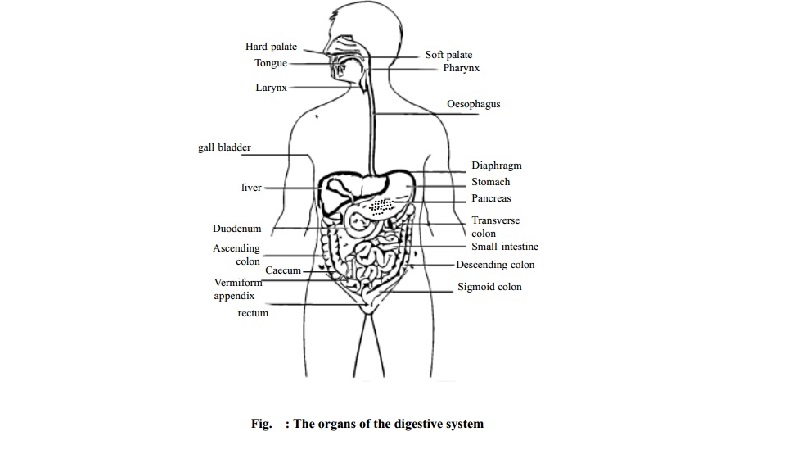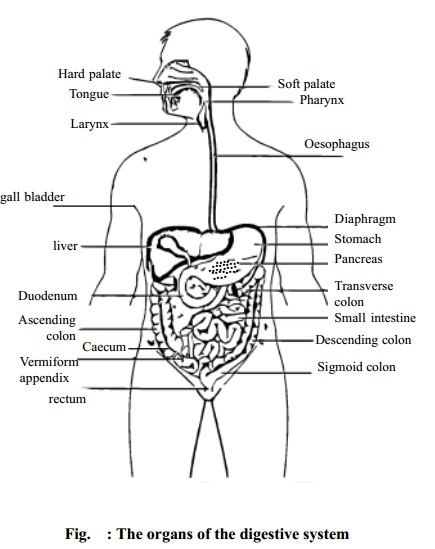Chapter: 11th 12th std standard Home Science Maintain Basic Knowledge for family life Higher secondary school College
Physiology of Digestion - Mouth, Stomach, Small intestine

Physiology of Digestion
Digestion takes place in three parts of the alimentary canal. They are:
Mouth - with the help of saliva from three pairs of salivary glands.
Stomach - with the help of gastric juice from the stomach wall and
Small intestine - with the help of pancreatic juice from the pancreas,
bile juice from the liver and the intestinal juice from the small intestine.
Most of the digestive juices contain chemicals known as enzymes which do
the work of breaking down foods chemically.
Digestion in the Mouth
The food that is ingested is broken down mechanically by the help of
teeth present. This is known as mastication
or chewing. This chewing action is aided by saliva that moistens and lubricates
the food, before it can be made into a bolus ready for swallowing. The saliva
helps in chemical digestion of the food. Saliva contains the enzyme amylase or ptyalin. Salivary amylase acts on starch which is a complex
polysaccharide, breaking it to maltose, a disaccharide.
Starch -> Salivary
amylase -> Maltose
Digestion in the
Stomach
The food material after being broken down by mechanical grinding and
having been converted into a bolus with the saliva reaches the stomach, which
pours a large quantity of gastric juice everyday. The mechanism of production
of gastric juice is chemical or hormonal in nature. When the digested food is
in contact with the gastric mucosa, the duodenum secretes gastrin a hormone that belongs to the group of gastrointestinal hormones. This causes the discharge of gastric
juice.
The gastric juice contain mainly Hydrochloric acid secreted by parietal
cells in the gastric glands and enzymes - 1) Pepsin 2) Renin.
Functions of
Hydrochloric acid
1.
Kills bacteria present in the food.
2.
Acidifies the food and stops the action of
salivary amylase.
3.
Converts inactive form of pepsinogen into active
form of pepsin.
Functions of Enzymes
1. Pepsin -
Converts protein into peptones, proteases and polypeptides.
2. Renin -
Converts the undigestible protein of milk into easily digestible one.
The smooth muscle layers of the stomach enable the gastric contents to
be liquefied to chyme. When the chyme is sufficiently acidified and liquefied,
the pyloric antrum forces small jets of gastric contents through the pyloric
sphincter into the duodenum.
Digestion in the Small
Intestine
The small intestine is the organ where completion of chemical digestion
of carbohydrates, proteins and fats occur. The small intestine secretes the
intestinal juice called succus entericus.
This consists of water, mucus, and enzyme enterokinase. Digestion in the small
intestine is aided by secretions from the accessory glands such as liver and
pancreas.

Related Topics